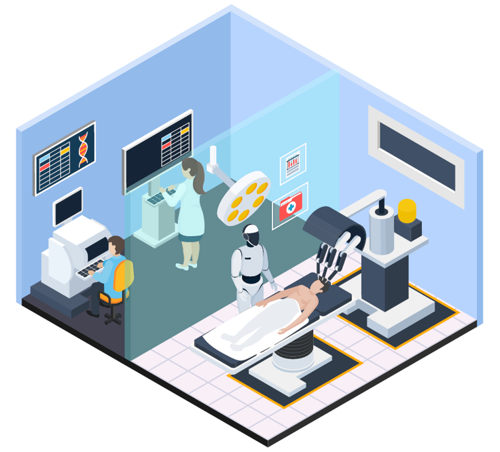Cataract
Here Come the Robots
Robotic surgery applications in ophthalmology are expanding. Dermot McGrath reports from Paris.

Dermot McGrath
Published: Friday, August 5, 2022
Robotic surgery applications in ophthalmology are expanding. Dermot McGrath reports from Paris.
The future of cataract surgery is robotic, enabled by artificial intelligence and advanced technology, which will offer unparalleled precision and accuracy for enhanced patient outcomes, according to Jean-Pierre Hubschman MD.
In a keynote address at the French Implant and Refractive Surgery Association (SAFIR) Annual Meeting, Dr Hubschman said robot-assisted surgery could help overcome the physical limitations of fixed surgical instruments, reduce surgeon fatigue, and deliver improved quality of patient care.
“Major technological advances have been made in recent years and robotic assistance will play an increasing role in ocular surgeries in the very near future. It will help overcome limitations of the human body such as hand tremor, fatigue, and our ability to react correctly and quickly in stressful situations,” he said.
Although robotic devices have already proven utility and safety in fields such as laparoscopic and cardiac surgery, their application in ophthalmology has lagged, Dr Hubschman said.
“This is probably due to the specificity of the field of ophthalmology with direct and accurate visualisation of anatomical structures and ready access to minimally-invasive surgical instruments,” he said.
Dr Hubschman went on to explain the three main concepts of robotic design: all-in-one handheld devices, co-manipulator systems, and telemanipulation systems.
Handheld devices are focused on tremor cancellation and depth locking and geared towards improving the surgeon’s dexterity. Co-manipulator systems are designed to perform specific tasks - with the surgeon holding and controlling the surgical instrument simultaneously with the robot that provides assistive compensation for the surgeon’s hand tremor. Telemanipulation systems are a class of robotics that enable the operator to work remotely by a computerised human-machine interface.
Robotics can intervene at a variety of levels during surgery, Dr Hubschman said. The first level increases precision by filtering tremors and modifying the scale of movements. Two robotic Platforms - MyNutia and Preceyes Surgical System - have already been used for this purpose in vitreoretinal surgery.
“Both of these platforms have been tested in humans and have demonstrated significant improvement in manipulative accuracy during vitreoretinal surgical manoeuvres. In addition, they confirmed the possibility of performing robotic-assisted surgery under local anaesthesia,” he said.
The second level of robotic intervention corresponds to technology integration such as OCT and microscope imaging to enable enhanced detection and feedback capacities. The third level takes the same information from imagery but adds artificial intelligence to guide the surgeon and potentially automate specific surgical gestures.
“Similar to the way autonomous cars can reduce the risk of accidents by 94% simply by eliminating human error, robotic surgery systems will initially allow for improved surgical precision and decreased complication rates but eventually perform autonomous surgery for specific tasks such as cataract removal,” Dr Hubschman said.
For cataract surgery, femtosecond lasers have already automated the initial part of the surgery by performing the incision, capsulorhexis, and lens fragmentation.
“The other surgical steps, such as nucleus extraction, cortical clean-up, capsular bag polishing, and IOL implantation, can also potentially be automated, allowing a significant reduction in complication rates as well as reducing the duration of the surgery through the use of artificial intelligence,” he said.
Despite the clear advantages of robotic surgery in ophthalmic surgery, significant barriers remain to their widespread adoption, concluded Dr Hubschman, including costs, safety concerns, and human acceptance.
Jean-Pierre Hubschman MD is associate professor of ophthalmology, Stein Eye Institute, David Geffen School of Medicine, University of California Los Angeles (UCLA), USA. hubschman@jsei.ucla.edu
